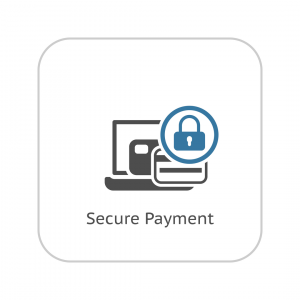Estimated reading time: 3 minutes
COVID-19 has taken so much from so many people, but could it be true that now, due to the pandemic, payment options are also falling victim to the rapidly evolving virus?  With many countries and areas forced to shut down their businesses to stop the spread of the virus, at one point, there was an uptick in digital payments to continue sales and business for those who were still operational. Depending on the user, several were quite skeptical of such solutions and how securely they are founded upon. Rightfully so, it’s been found that during the situation of panic and uncertainty that followed the COVID-19 pandemic, this period opened the door for fraudulent activities to occur because of various reasons.
With many countries and areas forced to shut down their businesses to stop the spread of the virus, at one point, there was an uptick in digital payments to continue sales and business for those who were still operational. Depending on the user, several were quite skeptical of such solutions and how securely they are founded upon. Rightfully so, it’s been found that during the situation of panic and uncertainty that followed the COVID-19 pandemic, this period opened the door for fraudulent activities to occur because of various reasons.
One of them being that when grocery stores began to cut their hours and worried shoppers panic-bought everything off the racks, there seemed to be a sense of carelessness and recklessness in the air. Customers were less cautious about their endeavors and didn’t follow the proper safety precautions when it came down to the final transactions. At the same time, it’s almost as if a state of vulnerability and consumer-anxiety took over, which lowered confidence levels, making customers more likely to be taken advantage of by fraudsters. Unfortunately, according to the Merchant Risk Council, 52% of merchants have reported tracking fraud on mobile channels.
Typically, fraudsters will use the similar digital channels as consumers do when making online purchases, logging into a bank account, or applying for a new credit card in order to fool risk management software and risk analysts. Payment security tactics are only as good as the data and one’s ability to access the accurate string of data at the right time.  In order to catch fraud right at its origin, financial institutions and online retailers alike need access to payment data across every piece of the end-to-end payment journey. Such data has to include the currency amount, the time the transaction was recorded, the card type, the terminal ID, IP geolocation address, and perhaps even fingerprint data. Stepping out ahead of the curve, can help one’s business to stand up against fraudulent activities and ensure that a prevention strategy is enforced. There are various other tactics that can be adopted to help avoid such activities from occurring.
In order to catch fraud right at its origin, financial institutions and online retailers alike need access to payment data across every piece of the end-to-end payment journey. Such data has to include the currency amount, the time the transaction was recorded, the card type, the terminal ID, IP geolocation address, and perhaps even fingerprint data. Stepping out ahead of the curve, can help one’s business to stand up against fraudulent activities and ensure that a prevention strategy is enforced. There are various other tactics that can be adopted to help avoid such activities from occurring.
Real-time monitoring can help retailers and FIs to trace a payment transaction from start to finish and hopefully spot any irregularities in the process, before a customer were to notice any suspicious activity on their own side of things. Overall, customer service can be improved upon in this scenario due to budget savings with an improved resilience to hard-hitting cyberattacks. FIs are also working to leverage digital intelligence by creating a digital footprint that can provide insightful clues about a user’s network origins to determine whether its direction is coming from a legitimate or hijacked device. The risk level can also be calculated better going forward, so you’d know what to expect.
On the observant side of things, machine learning (ML) can also add its perspective to the table. Supervised machine learning allows data from both fraudulent and non-fraudulent transactions to be studied to help determine where fraud lives. Through this conjecture, machine learning models attempt to help decrease the amount of anomalies in the payment space, especially those who can be accidentally mistaken, reducing customer frustration in the long run. Supervised machine learning’s older brother, Unsupervised machine learning is commonly used to dynamically learn and survey transactions to see where fraudulent activity is harbored. All in all, both of these algorithms work to spot irregularities in the system, to better inform  retailers, FIs, and ultimately the customer on the receiving end of things.
retailers, FIs, and ultimately the customer on the receiving end of things.
Back in April, we hosted a TEConnect Webinar episode featuring our Payments-guru, Jason Firment and a slew of SMEs participating in a panel discussion to talk about “The Wild World of Payments” and where they’ve gone from here in recent times. If you’re interested in listening in on that webinar, be sure to follow this link to learn more.

